Masters Memories: The greatest moments from each of Augusta National's 18 holes
No matter how you view the Masters, you can’t deny it delivers the drama.
The 2018 tournament is set to have the smallest field in almost two decades, which means there is an even greater chance that a favorite will take the green jacket (Tiger Woods, anyone?).
But no matter who earns golf’s most iconic coat draped across their shoulders on Sunday night, you can be sure they have had a few special moments of their own to get there.
Here we bring you the biggest moments in Masters history on each hole at Augusta National Golf Club:
No. 1 (Tea Olive) - Ernie Els’ 6-putt (2016)
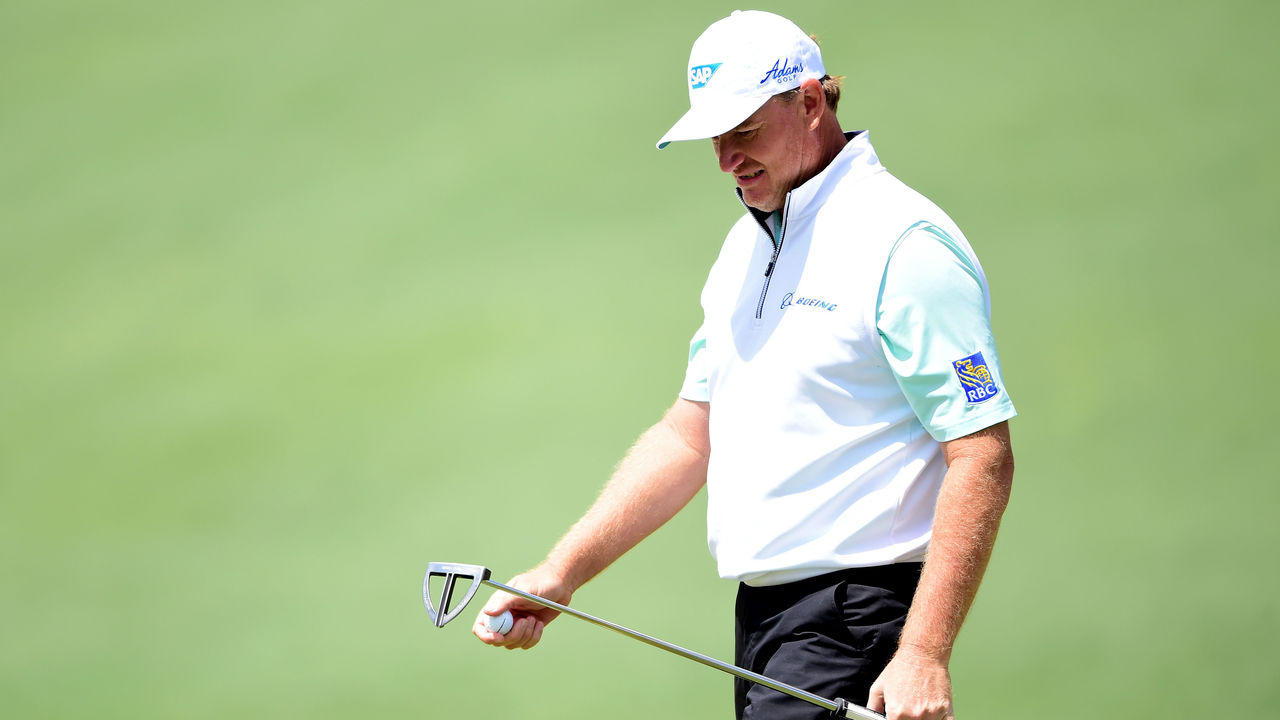
The par-4 opener at Augusta National is much more uphill than TV does it justice, with many golfers (and patrons) remarking at how steep the climb is up the fairway toward the green. It’s a beautiful start, except if you were Ernie Els in 2016.
Els, who admitted he was battling “snakes” in his head, took six putts from three feet to begin his first round en route to a 5-over-par score of 9. He said he couldn’t get the putter back, with a serious case of the yips coming on at a bad time.
All told, Els missed putts from three feet, 10 inches, 11 inches, and two feet. His final two putts were tap-ins (he hit them with one hand), missing one and mercifully making the sixth.
No. 2 (Pink Dogwood) - Louis Oosthuizen’s albatross (2012)
Although Oosthuizen would go on to lose in a playoff, the 2010 Open champion marked his name in Masters history after his 4-iron from 253 yards out on the par-5 2nd hole rolled nearly 90 feet across the green and dropped into the cup.
It was the first albatross ever made on the hole during the Masters.
He was one shot back of the lead on the tee, but left the green with a two-shot cushion.
No. 3 (Flowering Peach) - Charl Schwartzel’s eagle (2011)

To open the final round in 2011, Schwartzel chipped in for birdie. He followed that up two holes later by dunking his approach on the par-4 3rd from 114 yards for an eagle. He would go on to win the green jacket after making birdies on his final four holes (Nos. 14-18) - something that had never been done in Masters history.
No. 4 (Flowering Crab Apple) - Jeff Sluman’s ace (1992)
The 1988 PGA champion had three top 10 finishes at the Masters, but none better than 1992 when he finished T4, just two shots back of Fred Couples. Sluman made a hole-in-one on the par-3 4th in the first round, the only person to ever do so on that hole in the Masters.
No. 5 (Magnolia) - Jack Nicklaus makes eagle … twice (1995)
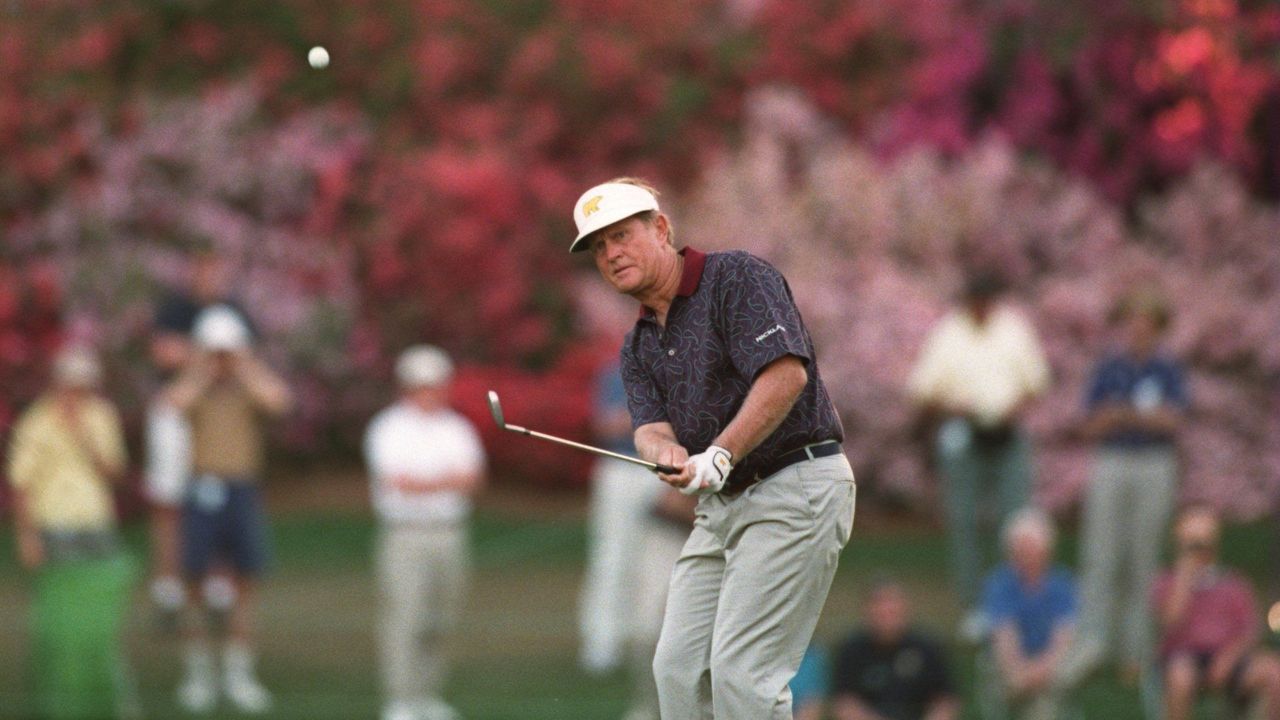
Jack Nicklaus and Augusta National go together like sweet tea and pimento cheese. It just works.
Nicklaus, the winningest golfer in Masters history (six green jackets, and is a member of Augusta National) nearly made another run up the board in 1995, but was felled by a tough 6-over-par 78 in Friday’s second round.
However, on both Thursday and Saturday, Nicklaus had the magic touch, making eagles from the fairway with his approach shot on the tough par 4.
He used a 5-iron from 180 yards in the first round and a 7-iron from 163 yards in the third round.
No. 6 (Juniper) - Amateur Billy Joe Patton’s ace (1954)
This downhill par 3 has seen plenty of action since the Masters first began in 1934, but perhaps the best of those moments was Patton’s hole-in-one in the early 1950s.
The Masters has a longtime tradition of honoring amateur golf – since one of its co-founders, Bobby Jones, remained an amateur for his whole career – and Patton earned his spot in the field that year to compete against the giants of the sport like Sam Snead and Ben Hogan.
And, he nearly beat them.
Patton used a 5-iron to make an ace in 1954 and eventually missed out on a playoff with Hogan and Snead by just one shot. He was trying to become the first amateur to win the Masters.
No. 7 (Pampas) - Byron Nelson drives the green (1937)
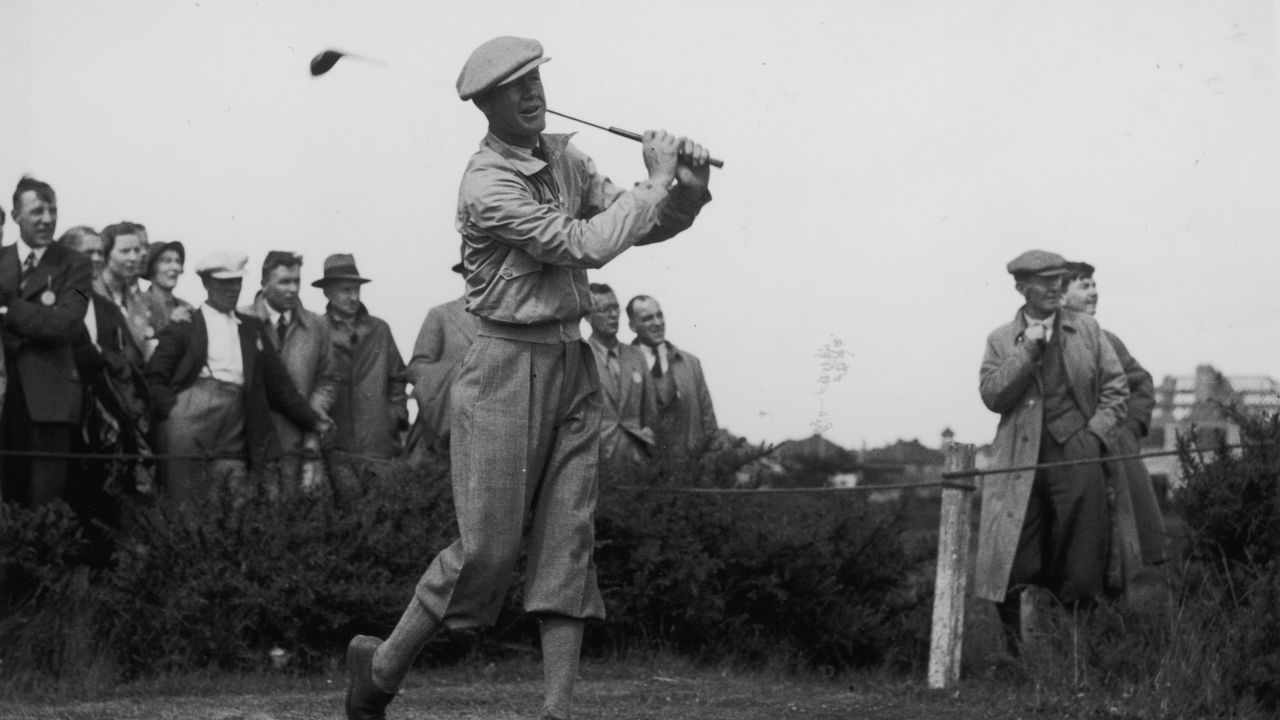
The seventh hole at Augusta National is a fairly straightaway par 4, but Nelson caused the membership to make the first change to the hole in the 1930s after he drove the green from 320 yards away – yes, in 1937.
Nelson, who won the Masters twice (including that year) made a two-putt birdie after driving the green. Augusta National moved the tee box back 20 yards the following year and it now plays upward of 450 yards.
No. 8 (Yellow Jasmine) - Tom Kite and Seve Ballesteros make eagle (1986)
Anything you can do, I can do better.
Kite (who has just one major championship to his name, the 1992 U.S. Open) and Ballesteros (who won the Masters twice) were paired together in the final round, providing a Masters memory for the ages.
On the uphill par-5 8th, Kite hit a wedge into the cup from about 80 yards. Ballesteros, who was about 40 yards closer, hit a bump-and-run that scooted into the hole on top of Kite’s ball, matching his eagle.
Kite finished T2, while Ballesteros finished fourth.
No. 9 (Carolina Cherry) - Greg Norman’s collapse begins (1996)
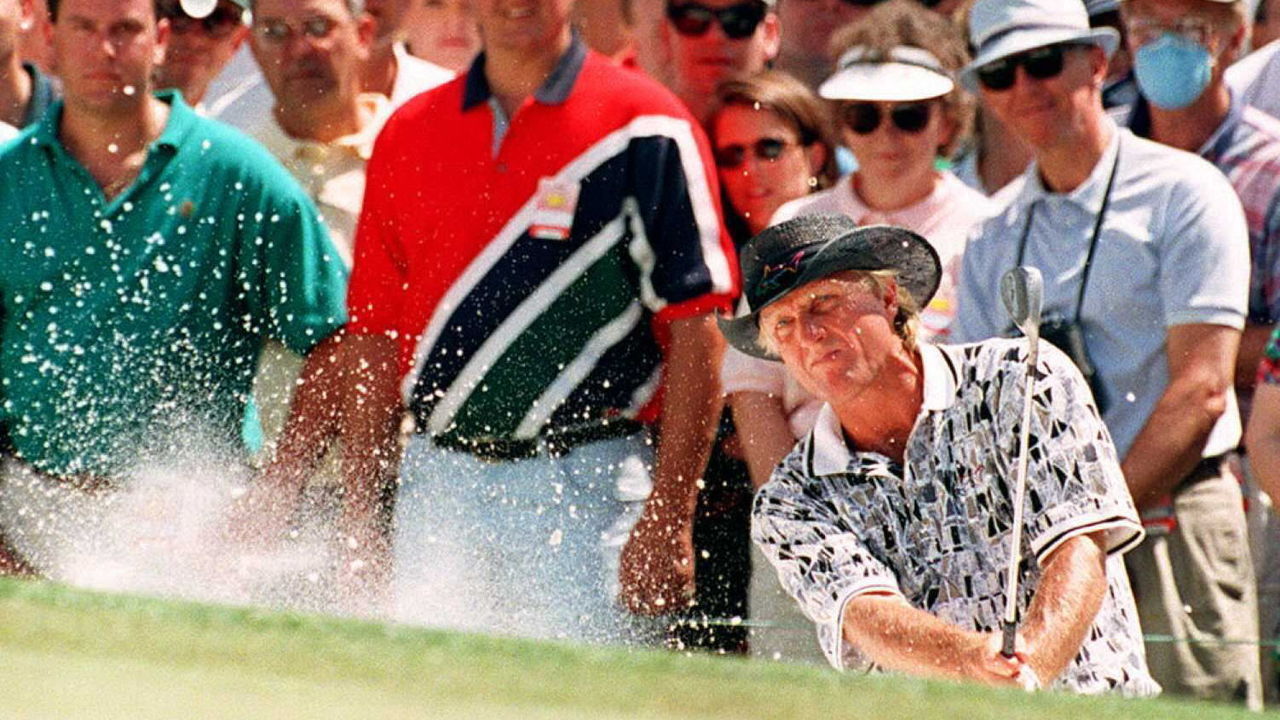
Of all the major collapses suffered by Australian Greg Norman, the Masters in 1996 may have been the toughest one to swallow.
Englishman Nick Faldo - who would go on to win his third green jacket - came from six shots back to win by five over Norman, who shot a 6-over-par 78 in the final round.
His epic collapse began on the par-4 9th (downhill off the tee, but uphill to a tricky green) where he made a bogey after trying to attack the flag, only to see his approach shot roll back down to the fairway.
He would bogey No’s 10 and 11 before making a double-bogey on No. 12.
No. 10 (Camelia) - Bubba Watson’s wild wedge (2012)
Watson had won twice the year before to earn a spot in his third Masters, but he was far from the favorite in 2012.
He did find himself in a playoff with Oosthuizen, though – who had earlier dunked his approach on the par-5 2nd for an albatross. Watson and Oosthuizen both made par on the first playoff hole (No. 18) and moved to No. 10, a downhill par 4 with a slight dogleg left.
Watson’s drive ended up in the trees to the right of the fairway, but he hit a wild gap wedge approximately 90 degrees through a small break in the trees and onto the green.
He eventually tapped in for par to win his first green jacket after Oosthuizen bogeyed.
No. 11 (White Dogwood) - Larry Mize chips in (1987)
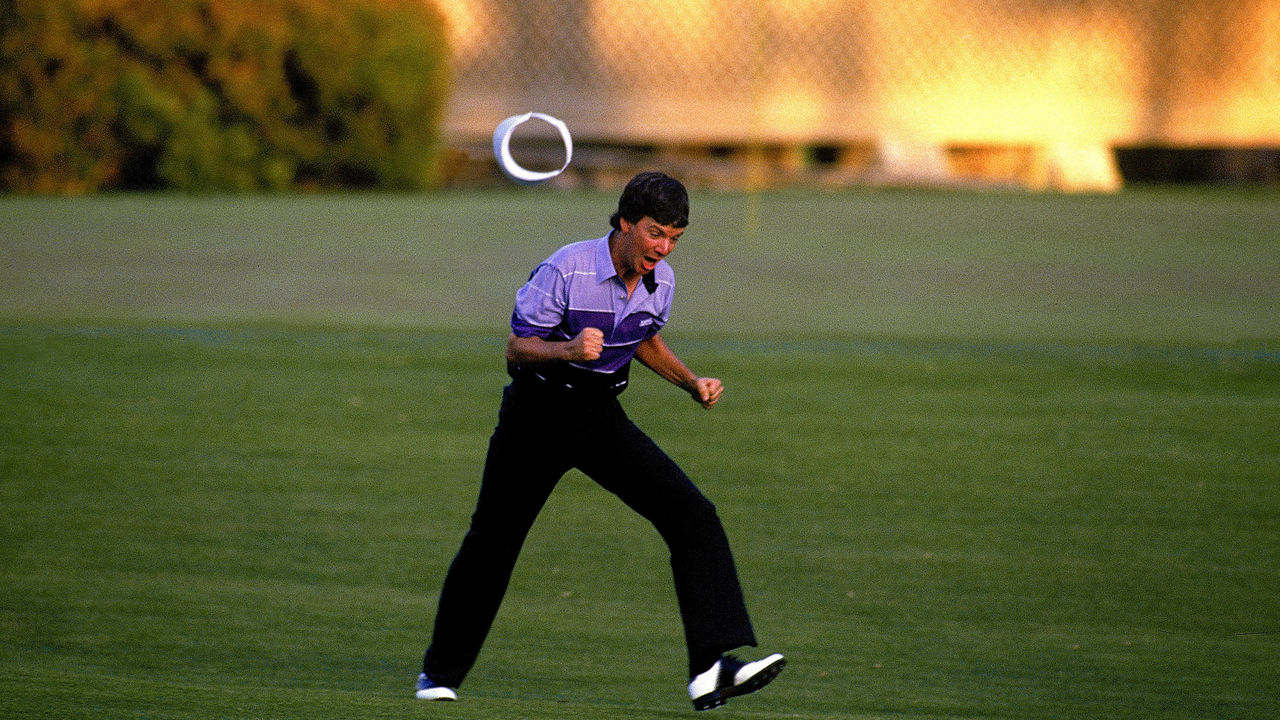
Mize, who is from Augusta, Ga., and who had worked at the golf course as a youngster managing the scoreboard on the par-4 3rd hole, went down as a local legend when he chipped in on No. 11 to win his first and only major tournament.
Mize ended up in a playoff against Seve Ballesteros and Norman after all three golfers finished at 3-under for the week. Ballesteros bowed out after the first playoff hole, leaving Mize and Norman.
Mize hit his approach woefully short on No. 11, but chipped in from about 150 feet for an unthinkable birdie. Norman had about 40 feet left for his own birdie to tie, but missed.
No. 12 (Golden Bell) - Jordan Spieth lays the sod (2016)
Spieth, having won the Masters the year before, looked to be on track to win back-to-back green jackets. He led after every round and had a five-shot lead going into the back nine on Sunday.
However, Spieth hit two balls into the creek short of the green on the par-3 12th (his tee ball, plus a shot from the drop zone) en route to a quadruple-bogey seven, hitting both shots fat.
Spieth birdied No’s 13 and 15, but a bogey on the par-4 17th sealed the loss, as Englishman Danny Willett would go on to win.
No. 13 (Azalea) - Sergio Garcia exorcises the demons (2017)
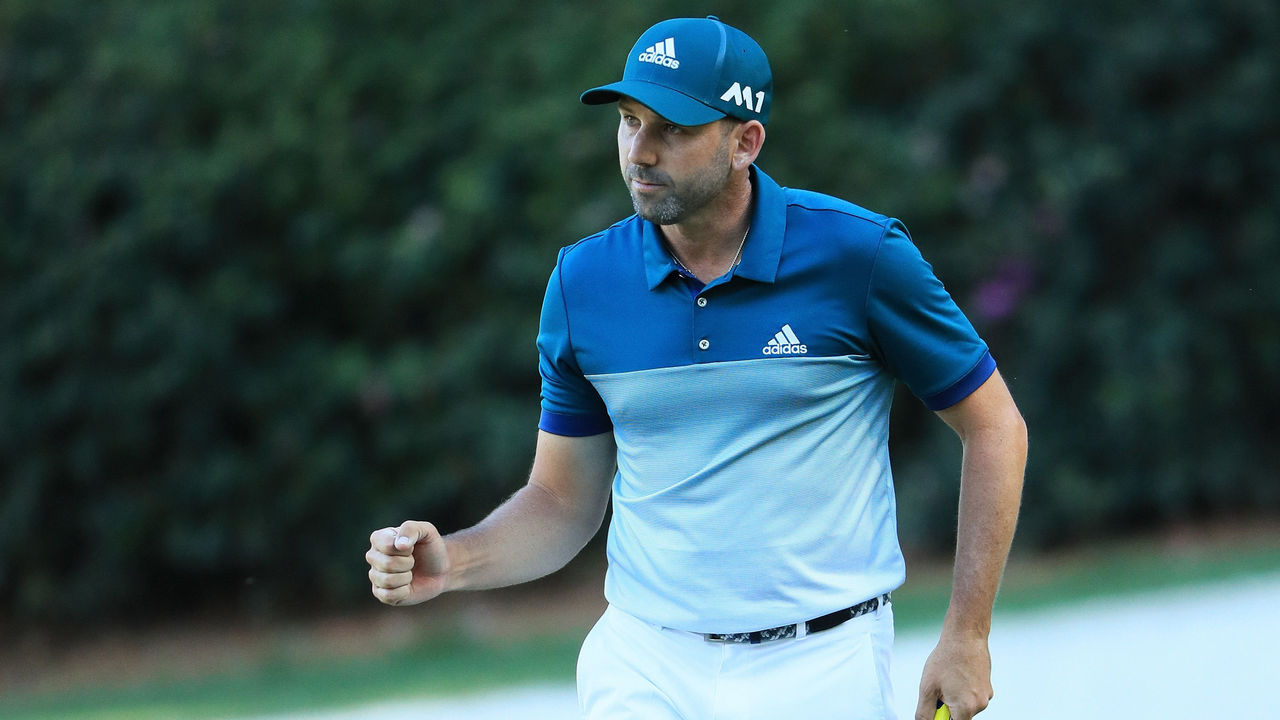
Garcia had long before admitted he wasn’t good enough to win a major, and the Garcia of the past may have succumbed to what happened a year ago on the par-5 13th at Augusta National.
Garcia put his drive under an azalea bush and had to take a one-shot penalty. It was unplayable.
But he ended up hitting his fourth shot just inches from the cup to save par, while his playing partner that day, Justin Rose, missed his birdie try from just four feet.
Garcia would go on to win the Masters in a playoff against Rose and name his daughter (born just a few weeks ago), Azalea.
No. 14 (Chinese Fir) - Phil Mickelson makes eagle (2010)
2010 will likely go down in history for Mickelson's Sunday shot on the 13th hole - a striped iron from the pine straw, between two trees, to just four feet from the cup, helping him win his third green jacket - but it’s what he did on Saturday that was even more special.
After making an eagle on No. 13 in the third round, he dunked his approach shot from the fairway for an eagle on the par-4 14th (a straightaway par 4). He nearly made an eagle on 13 as well - to have an unprecedented eagle-eagle-eagle stretch - but he settled for birdie.
No. 15 (Firethorn) - Gene Sarazen makes albatross (1935)

In just the second Masters ever, Sarazen (pictured left) knocked a 4-wood from 235 yards over the creek and into the hole during the final round.
It is dubbed the ‘shot heard ‘round the world’ and it helped Sarazen tie Craig Wood (right), whom he defeated the following day in a 36-hole playoff for his lone Masters victory.
No. 16 (Redbud) - Tiger Woods chips in for birdie (2005)
The final round of the 2005 Masters became a two-man battle between Woods and Chris DiMarco (they ended up in a playoff, but their final regulation scores were seven shots better than the two golfers who finished T3).
After both golfers birdied the par-5 15th and walked to the par-3 16th - long known as a hole with the flare for dramatics on Sunday due to its accessible pin position - DiMarco found the center of the green, and Woods pulled his tee shot and had to chip.
He knocked it about 20 feet left of the cup and let the slope pull it toward the hole. After a short delay with the ball wobbling close to the cup, it dropped in for an unlikely – but sensational – birdie.
Woods would go on to win his fourth green jacket in the playoff.
No. 17 (Nandina) - Jack Nicklaus makes birdie (1986)

The par-4 17th is a simple hole, and this was a simple shot – Nicklaus made a 12-foot birdie – but the moment was bigger than the sum of its parts.
Nicklaus, at 46, birdied No’s 9-11 and 13 and made an eagle on No. 15. The crowd was buzzing as the Golden Bear came out of hibernation (to borrow a line from a young Jim Nantz, who was making his Masters television coverage debut).
Nicklaus came to the par-4 17th and knocked in his birdie putt to put him ahead for good. He shot 30 on the back nine en route to capturing his sixth green jacket, and the call from iconic broadcaster Verne Lundquist (“Yes sir!”) is one of golf’s most memorable.
No. 18 (Holly) - Gary Player makes par (1961)
The final hole at Augusta National has served up a ton of great memories since the tournament’s inception, but none that were more meaningful to the grander history of the sport than Player’s par on the par-4 18th in 1961.
Player, who would win three green jackets, captured his first in 1961 after Palmer made a double-bogey on that same hole.
It was a seemingly straightforward result for Player, but in winning the Masters, he became the first non-American to do so.
Since Player, only 14 non-Americans have won the Masters from nine different countries, including fellow South Africans Trevor Immelman (2008) and Charl Schwartzel (2011).
Bonus
The Scoring Tent - Roberto De Vicenzo signs for the wrong score (1968)
After making a birdie on the par-4 17th, De Vicenzo, from Argentina, was tied with Bob Goalby. However, DeVicenzo’s playing partner that day, Tommy Aaron (who won the Masters in 1973), wrote down a ‘4’ instead of a ‘3’ on the scorecard.
De Vicenzo signed for the higher score after not checking his card carefully, and per the Rules of Golf, the higher score had to be counted. He missed out on a playoff that would have taken place the next day. Instead, Goalby was awarded the green jacket.
Adam Stanley has written about golf since 2011 for PGATOUR.com, LPGA.com, and the Canadian Press, among other organizations. He's also a frequent contributor to The Globe and Mail. Find him on Twitter @adam_stanley.
(Photos courtesy: Getty Images)
HEADLINES
- Jokic's 42-point night helps Nuggets steal Game 1 from Thunder
- Maple Leafs' Stolarz injured after collision with Panthers' Bennett
- What's next: Where the West's 1st-round outs go from here
- Nylander scores a pair as Maple Leafs beat Panthers in Game 1
- Padres' Shildt tossed after expletive-laden exchange with umpire